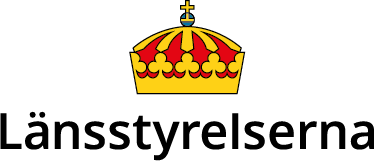Unaccompanied children
The responsibility for unaccompanied asylum-seeking children, UASC, is shared between various authorities, municipalities and regions. The County Administrative Board’s role is to coordinate the municipalities’ reception of unaccompanied children.
Every year children arrive in Sweden to seek asylum. Most of them have arrived here with one or both parents. There are also many children who arrive to Sweden without a parent or guardian; these unaccompanied minors seeking asylum are called unaccompanied children.
The life paths and backgrounds of the children vary, but common to all is that they are in a vulnerable situation.
Unlike other asylum seekers, the municipality’s social services are responsible for the unaccompanied children’s housing and social support, but other actors also have important roles in the reception of these children.
How the responsibility is shared
The responsibility for the reception of unaccompanied children and adolescents is shared between The Swedish Migration Agency, the municipalities, the County Council and the County Administrative Board.
The Swedish Migration Agency has the overall responsibility for the reception of unaccompanied children as long as the child is seeking asylum or if the child’s asylum application is denied. Among other things, this entails that the agency:
- assigns a municipality to the child
- investigates and makes decisions regarding the asylum application
- pays compensations and special allowances to the child
- pays compensations to the municipality.
The municipalities are responsible for the actual reception of unaccompanied children, that is to provide:
- housing (placement),
- other types of support that the child might need,
- schooling,
- guardians.
According to the Social Services Act, the municipality has the long-term responsibility for the child’s housing, support and protection. In the absence of a parent, the chief guardian of the municipality where the child is residing appoints a guardian that will speak for the child during the asylum process.
If the child is granted a residence permit, the municipality is responsible for the continued care and settlement of the child in Sweden and will also appoint a special guardian (särskilt förordnad vårdnadshavare, SFV).
The municipality has the same responsibility for unaccompanied children as it has for other children residing in the municipality.
The County Council is responsible for providing unaccompanied children with the health care and dental care that they need. Asylum seeking children have the right to receive the same level of care as children that are residents in the country. When a person seeks asylum in Sweden, a health check is offered to them, which aims to provide a medical assessment of the person’s general health as well as identifying any special health care needs or disease control measures. The County Council is also responsible for youth clinics and child psychiatry.
Health and well-being in different languages, the website YOUMO External link.
External link.
The County Administrative Board has a coordinating role in regards to the reception of unaccompanied children in the county. Their focus lies on the municipalities’ capacity and developing regional cooperation.
The County Administrative Board will:
- Work to promote municipal preparedness and capacity to receive unaccompanied children.
- Communicate with the municipalities on the availability of different forms of housing, education, health, spare time, and guardians.
- Supervise the Chief Guardians’ activities.
- Work towards preventing that unaccompanied children disappear.
We carry out the assignment based on the Convention on the Rights of the Child.
Settlement assignment model for unaccompanied children
The reception of unaccompanied children shall be evenly distributed across the country. Therefore, the settlement assignment is based on a distribution model, where every municipality is assigned a number. The number is calculated based on the population of the municipality and their previous reception of newly arrived persons and unaccompanied children.
If an unaccompanied child seeks asylum in Sweden and has a close relative residing in a Swedish municipality, the child will be assigned to that same municipality. If the child doesn’t have a close relative, the child will be assigned to the municipality in line to receive unaccompanied children.
In some cases, unaccompanied children can also come with a completed residence permit, if they have been selected by the UN refugee agency UNHCR for resettlement in Sweden. They are then designated as quota refugees according to the distribution model for the settlement of new arrivals. Even for unaccompanied children who are transferred to Sweden as quota refugees, the social service is responsible for accommodation and care.
Settlement assignments, the Swedish Migration Agency External link.
External link.
Government compensation, the Swedish Migration Agency External link.
External link.
Unaccompanied children that disappears
It is a part of the County Administrative Board’s assignment to work towards preventing that unaccompanied children disappear. We have, for example, produced regional routines, suggested measures to prevent disappearances, and carried out a survey regarding unaccompanied children that have been registered missing during the period 2013–2020.
In the best interest of the children
What is in the best interest of the children should be taken into account in the County Administrative Board’s work. The UN’s Rights of the Child’s four basic principles are important starting points for us:
Article 2
All children are equal. No child should be discriminated or treated unfairly on any basis.
Article 3
What is best for the child should always be considered first.
Article 6
All children have the right to a life and to develop. To be able to develop a child needs security and opportunities to play.
Article 12
All children have the right to express their opinion. Adults should listen, take the child’s opinion into account and provide feedback to the child.
